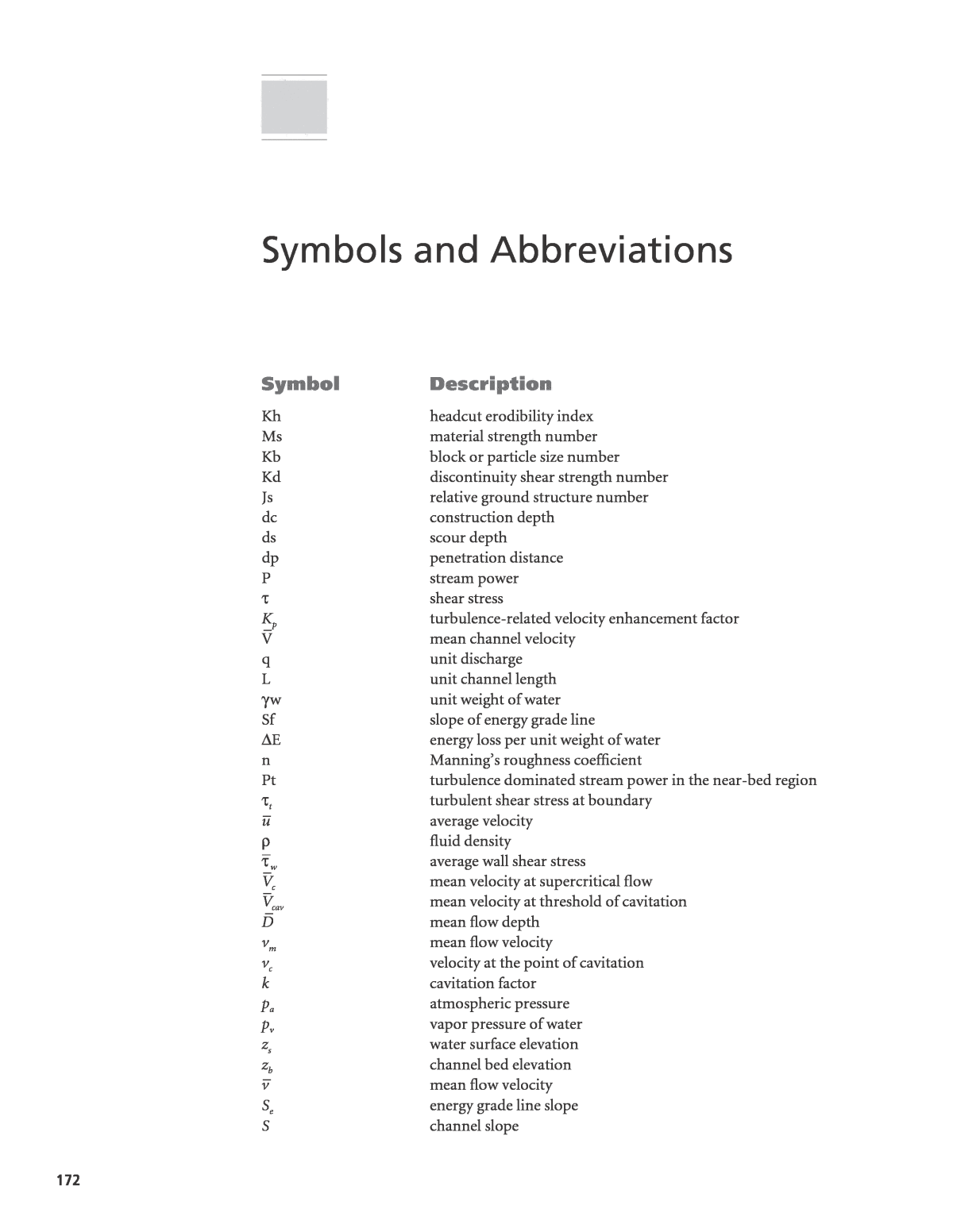

Below is the uncorrected machine-read text of this chapter, intended to provide our own search engines and external engines with highly rich, chapter-representative searchable text of each book. Because it is UNCORRECTED material, please consider the following text as a useful but insufficient proxy for the authoritative book pages.
172 Symbol Description Kh headcut erodibility index Ms material strength number Kb block or particle size number Kd discontinuity shear strength number Js relative ground structure number dc construction depth ds scour depth dp penetration distance P stream power t shear stress Kp turbulence-related velocity enhancement factor V _ mean channel velocity q unit discharge L unit channel length gw unit weight of water Sf slope of energy grade line DE energy loss per unit weight of water n Manningâs roughness coefficient Pt turbulence dominated stream power in the near-bed region tt turbulent shear stress at boundary u _ average velocity r fluid density t _ w average wall shear stress V _ c mean velocity at supercritical flow V _ cav mean velocity at threshold of cavitation D _ mean flow depth vm mean flow velocity vc velocity at the point of cavitation k cavitation factor pa atmospheric pressure pv vapor pressure of water zs water surface elevation zb channel bed elevation v _ mean flow velocity Se energy grade line slope S channel slope Symbols and Abbreviations
Symbols and Abbreviations 173 SP stream power Hb block height Lb block length Wb block width HL head loss E energy q unit discharge Sc channel slope ESDi equivalent hourly scour depth NILi normalized incremental loss NWs0 normalizing initial weight Ws0 initial sample weight Wsi incremental sample weight SGr specific gravity or unit weight of the rock sample A normalizing unit area ESPi equivalent hourly stream power A hydraulic attack A0 hydraulic attack threshold GSN geotechnical scour number Ks scour number y _ s average annual scour depth li annual frequency of the ith recurrence-interval event ymax total scour at the bridge DT remaining service life rwater density of water k absolute channel roughness for Erodibility Index Method C Chezy coefficient Abbreviation Description Caltrans California Department of Transportation NHI National Highway Institute NRCS United Stated Department of Agriculture, Natural Resources Conservation Service USACE United States Army, Corps of Engineers USBR United States Department of the Interior, Bureau of Reclamation USGS United States Geological Survey
